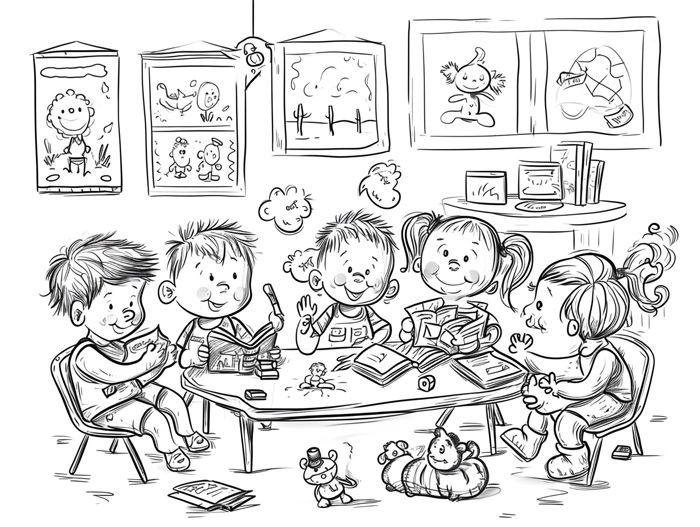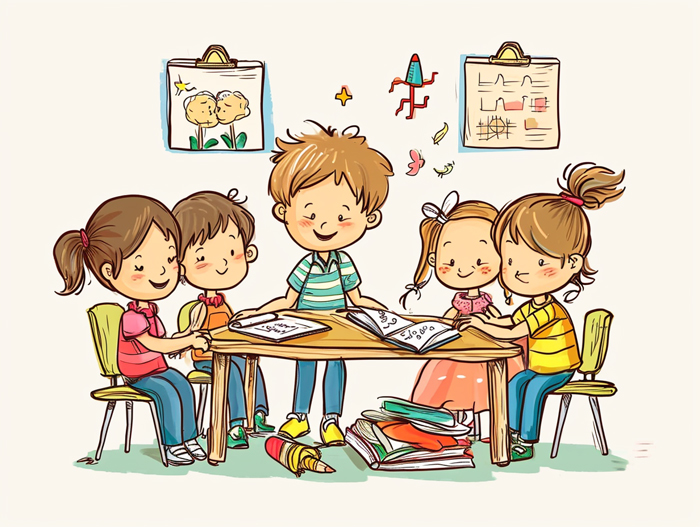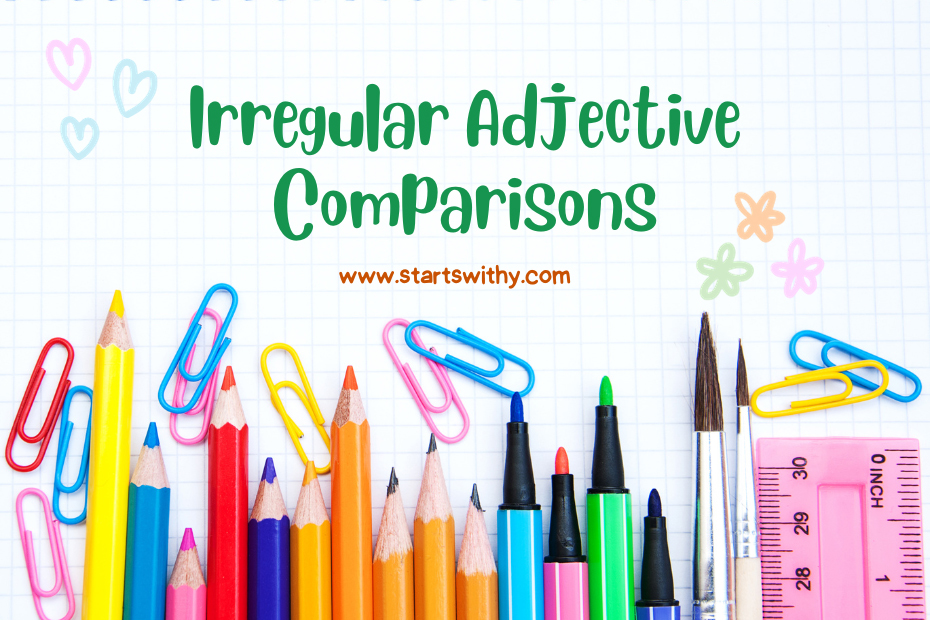Navigating the English language can feel like a maze, especially when it comes to irregular adjective comparisons. I’ve seen many learners trip over these quirky words that don’t follow the usual rules. That’s why I’m diving into the world of adjectives that prefer to march to their own grammatical beat.
We’re all familiar with adding -er and -est to make comparisons, but what about the words that break the mold? Words like “good,” “bad,” and “far” play by their own rules, and I’m here to guide you through their twists and turns. Understanding these exceptions is key to mastering English and sounding like a native speaker.
So let’s get ready to explore these linguistic anomalies. I’ll make sure you’re equipped to use them with confidence in your everyday conversations and writing.
Regular Adjective Comparisons in English
Before diving into the oddities of irregular adjectives, it’s essential to grasp the fundamentals of regular adjective comparisons. In English, most adjectives follow a straightforward pattern when they’re compared. I’ve found that understanding regular comparisons lays a solid foundation for young learners and helps them pick up exceptions more easily down the line.

The Basic Rules
When teaching children, it’s crucial to start with simple, one-syllable adjectives. These adjectives typically take -er for the comparative form and -est for the superlative. Here’s how it usually goes:
- Tall becomes taller or tallest
- Small becomes smaller or smallest
- With adjectives ending in a silent ‘e,’ like large, simply add -r or -st to make larger or largest
There are a few more rules when the adjectives have more syllables.
- For two-syllable adjectives not ending in ‘y,’ like clever, we often use more for the comparative and most for the superlative forms. So, clever becomes more clever or most clever
- However, when a two-syllable adjective ends in ‘y,’ change the ‘y’ to ‘i’ and add -er or -est. For example, happy becomes happier or happiest
In the case of adjectives with three or more syllables, use more and most again.
- Beautiful becomes more beautiful or most beautiful
- Intelligent becomes more intelligent or most intelligent
Keeping It Engaging
To keep young minds engaged, I like to incorporate a mix of visual aids, fun activities, and examples from their everyday lives. Associating comparisons with objects in the classroom or characters from a story helps cement these rules in a practical and memorable way.
I recommend using a variety of sentences to show these comparisons in action. It’s not just about the rules; it’s about how these words can be used to describe and compare their world. By exposing students to a wealth of examples, they’ll start to understand and apply these rules intuitively.
Introduction to Irregular Adjective Comparisons
As I delve deeper into the realm of English adjectives, I encounter a fascinating subgroup: irregular adjectives. Unlike their regular counterparts, irregular adjectives don’t follow the standard rules of adding “-er” or “-est” to form their comparative and superlative degrees. Instead, they transform entirely. My role as an educator extends to simplifying these complexities for young minds.
To ensure a solid grasp on the subject, I’ve found it essential to introduce the concept step by step. I start by presenting the most commonly used irregular adjectives because early exposure to these words can significantly ease the learning curve for preschoolers. I’ve noticed that incorporating these adjectives into daily conversations and interactive games captures the children’s interest more effectively.

Here’s a snapshot of the structure that typically guides my teaching approach:
- Begin with basics: Introduce irregular adjectives such as ‘good,’ ‘better,’ and ‘best.’
- Contextual learning: Use them in sentences that relate to the children’s experiences.
- Visual aids: Support the words with pictures and physical objects to reinforce understanding.
- Repetition is key: Practice through routine and repetition ensures retention.
While many irregular adjectives do follow a pattern of their own, remembering each can be challenging. I scaffold my teaching by highlighting patterns where they exist and encouraging learners to spot the anomalies. This method fosters a sense of achievement as young learners begin to recognize and apply these irregular forms in their language use.
It’s also imperative to mention that as the list of irregular adjectives grows, I complement my lessons with storytelling and role-playing activities. Children become little linguists, experimenting with adjectives like ‘bad,’ ‘worse,’ and ‘worst’ in a playground setting or while portraying characters from their favorite stories. These activities not only enhance their linguistic skills but also their creativity and critical thinking abilities.
The progression from regular to irregular adjective comparisons is a journey dotted with learning opportunities. As a guide, I ensure that each step is rooted in clarity and practical application. Enriching the vocabulary of preschoolers with these important forms equips them with a skill that’ll be used extensively as they delve further into the beauty of the English language.
The Quirky World of Irregular Adjectives
Delving into the realm of irregular adjective comparisons adds an exciting twist to teaching English. I’ve found that when I introduce young learners to these unique words, their curiosity is immediately piqued. Why do some adjectives like “good” become “better” and not “gooder”? It’s a delightful challenge that opens the door to exploring the nuances of the English language.
I believe that irregular adjectives are the spice in the stew of our linguistic feast. They defy the regular patterns and make language learning anything but mundane. Here are some strategies to help kindergarteners grasp these peculiar words:
- Mnemonic Devices: I create fun phrases or songs that associate the adjectives with their comparative and superlative forms. This not only aids memory but also adds a layer of enjoyment to the learning process.
- Thematic Learning: Introducing irregular adjectives within the context of a story or theme can solidify their usage. For example, during a lesson about animals, I might compare the “big” bear, the “bigger” elephant, and the “biggest” whale. This contextual approach can help students better understand and apply their new vocabulary.
- Regular Reviews: Consistent practice is critical for retention. I incorporate quick, playful reviews at the start or end of lessons to keep these irregular forms top of mind for my students.
To ensure each child in my class gets the most out of these lessons, I use individualized attention to recognize their unique learning paces. I’ll have one-on-one sessions or small group activities that allow for more direct interaction and personalized feedback.
Incorporating visual aids, like colorful charts and flashcards, I’ve noticed a marked improvement in how quickly preschoolers remember and use irregular adjectives. These tools are not just aids; they’re catalysts for more effective learning.
Leveraging the power of storytelling, I often ask children to create their own tales using irregular adjectives. This encourages them to employ their new vocabulary in creative ways while enhancing their understanding of word functions within sentences.
To further enrich my teaching methods, I frequently attend workshops and collaborate with fellow educators to stay abreast of innovative techniques. This continuous learning ensures that I can offer my preschoolers the finest education in language arts.
Exploring Exceptions: Good, Bad, and Far
In teaching the finer points of English to young learners, I’ve noticed that irregular adjective comparisons often trip up even the most astute. Take words like good, bad, and far—standard comparative and superlative rules don’t apply. It’s crucial to delve into these exceptions for a well-rounded understanding.
Good transforms into better and best, not gooder and goodest. Similarly, bad becomes worse and worst rather than badder and baddest. Far is unique too—often becoming farther or further, and farthest or furthest. While farther and farthest are typically used for physical distances, further and furthest can denote both physical and metaphorical advancement.
Here’s how I like to tackle these tricky terms with my kindergarteners:
- We start with familiar contexts, relating the adjectives to their everyday experiences.
- I introduce fun characters and scenarios where these adjectives naturally come to life.
- Visuals play a significant role, where I use images or actual physical distances to illustrate farther vs. further.
- Repetition is key, but so is variation—I mix up activities to keep their interest piqued while reinforcing concepts.
For instance, when explaining better, we often talk about what makes one day better than another—perhaps it’s ice cream at lunch! For worse, we might discuss a rainy day versus a sunny day. As for far, I might have the kids throw a ball and see who can reach the farthest distance.
These methods are not set in stone and often require adaptation. Observing the children’s responses and tuning into their learning styles is essential for making these irregular adjectives stick. By embracing these peculiar words as part of a larger linguistic adventure, I make sure my young students not only memorize them but also understand their usage in real-life contexts. This way, English remains a vibrant, living language for them, full of curiosity and discovery.
Mastering Irregular Adjective Comparisons in English
When approaching the teaching of irregular adjectives, I’ve learned that it’s vital to emphasize their patterns and irregularities concurrently. As I unfold the layers of English adjectives, good, bad, and far become prime examples of departures from regular comparison forms. Not only are these terms widely used but they are foundational to a child’s expanding descriptive vocabulary.
My tactics typically include a blend of teaching methods. For instance, I’ve seen remarkable progress when I integrate games that encourage children to contrast items using these adjectives. “Which is better, an ice cream or a broccoli?” That’s always a giggle-inducing way to reinforce the superlative form of “good”—best. Likewise, with “bad,” posing a question like “Which is worse, a scratch or a bruise?” helps convey the comparative and superlative forms, worse and worst, respectively.
For “far,” things get a bit more physical. I’ve found that incorporating movement into lessons cements the adjectives “far,” “farther,” and “farthest” into their memories. A simple activity is to have different objects placed at varying distances, asking the kids to identify which is farther and which is the farthest.
Moreover, the adoption of technology in the classroom has opened up interactive opportunities for learning. There are apps and games specifically designed to teach these concepts in an engaging way. Coupling my teachings with these digital tools provides a hands-on experience that’s both immersive and effective.
Above all, patience is key. Every child learns at their own pace, and I make it a point to celebrate each small victory. Adjusting my lesson plan to accommodate the strengths and weaknesses of my students ensures that everyone moves forward together. By tackling these foundational adjectives head-on, my goal is for each student to confidently use them in both spoken and written language, weaving them seamlessly into their communication.
Conclusion
Mastering irregular adjective comparisons like good, better, best and bad, worse, worst can be a delightful journey for kindergarteners with the right approach. I’ve shared how incorporating play, technology, and personalized learning can transform a challenging topic into an engaging experience. Remember, it’s not just about memorizing rules—it’s about understanding and applying them in everyday communication. With patience and creativity, I’m confident every young learner can conquer these linguistic hurdles and enrich their English skills. Let’s continue to make learning language an adventure that excites and educates in equal measure.




